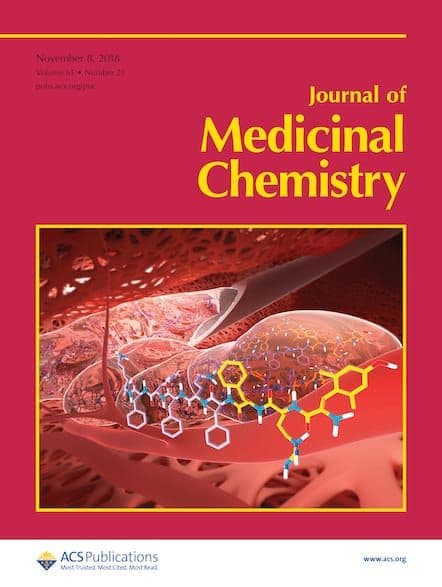Discover how ACS Publications’ latest collection of drug annotations offers powerful insights and real-world strategies to accelerate innovation in pharmaceutical R&D.

Navigating the complex landscape of pharmaceutical research and development demands innovation and resilience. Every R&D professional in pharma and biotech understands the constant pressure to overcome hurdles, whether that’s drug design models, Structure-Activity Relationship (SAR) insights, or improvements in interacting with biological targets. But what if the keys to innovation lie within the detailed accounts of past triumphs?
A recently launched ACS Publications journal collection showcases 20 outstanding drug annotations, a unique article type in the Journal of Medicinal Chemistry that records new drug discoveries from laboratory to clinical development. This detailed medicinal chemistry journey not only illuminates the path others took in pursuit of new drugs but also presents several benefits. Here are four ways drug annotations can be instrumental in advancing your own drug hunting journey.
1. Innovate faster
Drug annotations can help you innovate faster by enabling you to learn from other research teams. Take, for example, the groundbreaking discovery of Aficamten, a revolutionary cardiac myosin inhibitor, by Chuang et. al. This pivotal work is not only shaping new approaches to treating genetic hypertrophic cardiomyopathy but also informing a broader understanding of the role of genetics in cardiovascular disease and sudden cardiac death. Within four years of publication, it's garnered 118 journal citations and eight patent citations, suggesting a ripple effect that has propelled subsequent discoveries in related fields.
The development of GDC-9545, a next-generation hormone therapy for ER-positive breast cancer, further illustrates how insightful drug annotations can fuel future research. Its documented journey has already inspired 100 citations, in addition to two patents focused on novel drug compounds and tumor treatment.
2. Gain diverse perspectives
Drug annotations also provide exposure to a diverse array of approaches and methodologies that can inform your own pursuit of breakthroughs. For example, to overcome the short safety window and limited therapeutic effect of existing acetylcholinesterase (AChE) inhibitors for Alzheimer's disease, the research team (Zhou et al.) employed a novel kinetic-driven drug design strategy to identify a new-generation AChE inhibitor. This resulted in a promising, highly potent, highly selective, orally bioavailable, and brain-preferentially distributed compound that also demonstrated significant cognitive improvement in mouse models. The unconventional strategy of Zhou et al. may be the inspiration you need to employ your own novel approach to drug design.
3. Avoid common pitfalls
Beyond inspiration, well-documented research provides invaluable lessons in navigating the common pitfalls of drug development. By examining the detailed accounts of how other research teams addressed classic challenges, you can gain practical strategies to overcome similar issues in your own lab.
For instance, the research team led by Cregg et al. meticulously documented their Structure-Activity Relationship (SAR) exploration and the discovery of Daraxonrasib (RMC-6236), a noncovalent, potent tri-complex inhibitor of multiple RAS mutant and wild-type (WT) variants. Their step-by-step narrative reveals the trial-and-error process that ultimately led to significantly improved bioavailability, alongside other crucial drug characteristics. This level of detail recorded in their published annotation offers a practical guide for tackling similar research hurdles.
4. Push the boundaries of what’s possible
Just as engaging with accomplished individuals can motivate and inspire, delving into the documented journeys of successful drug discoveries can ignite the boldness and curiosity needed to push the boundaries of your own research.
The development of the novel drug Berotralstat (BCX7353) exemplifies this spirit of ambitious innovation, driven by a vision to address an unmet need in hereditary angioedema (HAE). Motivated to revolutionize the drug delivery process for this condition, Kotian et al. designed Berotralstat, which became the first and only FDA-approved prophylactic oral treatment for HAE attacks. This successful case study, which details the team’s structure-guided drug design strategy, underscores the power of identifying unmet needs and tenaciously pursuing novel solutions.
ACS Publications—a vast library of innovation and strategic insights
Groundbreaking research doesn’t just inform; it accelerates innovation. Whether you’re aiming to optimize drug delivery, refine molecular targets, or innovate faster by avoiding others’ missteps, learning from well-documented discoveries offers essential, repeatable lessons you can implement in your own lab. To spark your own breakthrough, visit the special collection to read more articles like these or bookmark this page for future publications in the series.
Want more research insights? Get ACS Industry Insider today.
ACS Industry Insider is a monthly newsletter designed to help industrial researchers stay on top of the latest innovations. With just a few clicks, you can choose up to six research areas and receive five curated journal articles per industry each month. This tailored content is accessible only through ACS Industry Insider, granting you full-text access to each article regardless of your institution's subscription status. View a sample issue of ACS Biotech & Pharma Industry Insider.
Subscribe to ACS Publications for your team
ACS Publications are home to the most trusted, most cited, and most read chemistry research, with more than 300 million downloads per year. A subscription to ACS content provides swift, direct access to a comprehensive suite of trusted scientific journals and books, all in one location, helping pharma and biotech researchers overcome their toughest scientific challenges to drive research forward.
